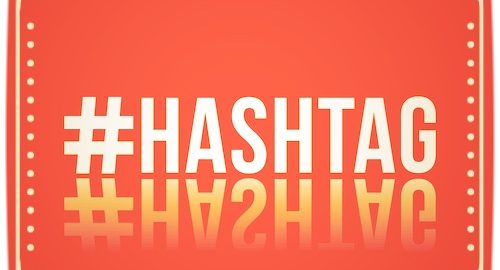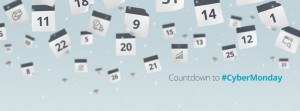 A hashtag is word preceded by a hash mark (#), used within a message to identify a keyword or topic of interest and facilitate a search for it.
A hashtag is word preceded by a hash mark (#), used within a message to identify a keyword or topic of interest and facilitate a search for it.
Hashtags are such a prominent part of online culture today and people have started using them outside of their intended purpose like using them in text messages, chats, songs, and advertisements.
Hashtags are a way for social media users to tag their posts with keywords, which in turn make them easier for social networks to organize and users to search.
So whenever a user adds a hashtag to their post, it is immediately indexed by the social network and searchable by other users. Once someone clicks on that hashtag, they’ll be brought to a page that aggregates all of the posts with the same hashtagged keyword in real-time.
Once a keyword picks up enough momentum it becomes known as “trending.” Trending isn’t simply a matter of becoming the most popular hashtag on the networks. Each users’ trending topics is different based on their location and social connections. You can use hashtags on personal and business pages, in groups and even in comment sections. You can use them anywhere to get found!
If you’re looking for a completely cut-and-dry ruling on the topic of hashtags, then here it is: You should be using hashtags for your business and your social media marketing.
Why should you use Hashtags?
- By including a hashtag in your updates, you can get in front of MANY MORE potential clients who may not have seen your post otherwise and can create extra buzz and exposure for your business by sharing your content.
- Hashtags are the most popular means of categorizing content on social media
- Hashtags allow you to find relevant content from other people and businesses
- Hashtags allow you to connect with and engage other social media users based on a common theme or interest
How to use Hashtags?
Remember, hashtags have to be ONE word. Capitalization doesn’t matter: You can choose whatever capitalization you want in the words themselves and the hashtags will show the same results. #SocialMediaMarketing and #socialmediamarketing show the same search results.
TIP: Capitalize The First Letter Of Each Word: #whenyouputmanywordstogether in a single hashtag, the letters can become all jumbled up and difficult to read. #ButIfYouCapitalize the first letter of each word, it’s easier to distinguish each word and read at a glance, and the hashtags becomes more memorable.
Rule of thumb: 1-3 hashtags are best over all platforms. Don’t have more hashtags than words, except on Instagram.
Which Networks Support Hashtags?
Twitter: The network that brought us the hashtag is the most popular site to use it on. Just scrolling through my own feed I see that more than half of the tweets contain a hashtag. You can find the trending topics on the left hand side of your Twitter stream.
Instagram: Hashtagging on Instagram is a MUST. Simply hashtag the picture you took and it will create a link to a page with other pictures of the same subject.
Facebook: To use a hashtag on Facebook, all you have to do is publish a Facebook post to your Page or timeline that includes the hashtag. Be sure your post is public if you want people other than your Facebook friends to be able to find it. To make a Facebook post public, click on the button to the right of “Post” and choose “Public” from the dropdown menu.

To make a Facebook post public, click on the button to the right of “Post” and choose “Public” from the dropdown menu.
Google+: Google+ uses hashtags similar to the other sites, but with one main difference. Google+ will add hashtags to content if they think that it is a relevant and popular keyword.
YouTube: You can use hashtags in video titles or descriptions to ensure viewers find your video when they search for a specific hashtag.Hashtag use within YouTube is most prevalent in the comments section. Users can leave comments with hashtags, which will then click through to a page with videos that contain that hashtag in their title.
Linkedin: Linkedin now supports hashtags again. Hashtags included in your posts (or others) are now tappable and lead to search results so that you can discover other posts with the same hashtag. NOTE: Hashtag functionality has only been added to the mobile app, NOT to the desktop. In a post about the launch of their re-vamped long-form publishing platform, LinkedIn has confirmed that hashtags are also coming to desktop “very soon”. You MUST add hashtags to your Publisher articles or long-form posts. This will tell LinkedIn what categories your article should be submitted to, and it will be indexed accordingly. When you click “publish” on your LinkedIn publisher article, a pop up will appear to add your tags. Add a minimum of three hashtags, and a maximum of five.
Pinterest: Hashtag are not officially supported on Pinterest. Hashtags are only clickable in a Pin description. If you put a hashtag in the description of a pin, it does not mean it will appear in search results for that hashtag. Pinterest does not index all the pins with a hashtag; Not all pins that have the hashtag appear in search results.
Also, hashtags aren’t searchable on Pinterest, so you’ll need to just search the keyword to find the content.
Do not use hashtags in your username, account description, names or descriptions of the boards. You cannot click hashtags on mobile. Hashtags are clickable only on desktop. This must be taken into account considering that over 80% of traffic on Pinterest comes from mobile devices.
How To Find Hashtags On Social Media Networks:
Use the search window or the magnifying glass on your home screen to search the hashtags:
How to find hashtags on Twitter:

How to find hashtags on Instagram:

How to find hashtags on Google+:

How to find hashtags on Linkedin (mobile only):

How to find hashtags on Linkedin
How to find hashtags that will grow your reach:
To find trending and popular hashtags, use these sites:
- https://www.hashtags.org
- https://www.hashtracking.com
- http://hashtagify.me
- https://ritetag.com
- https://tagboard.com
- https://www.trendsmap.com
Start using hashtags to improve your social media marketing!

Rules of Using Hashtags on Social Media Courtesy http://louisem.com
(41)
Report Post







